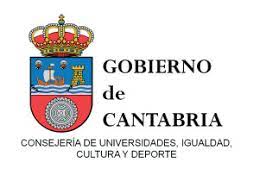La saga/fuga de J,B. as (video)game
DOI:
https://doi.org/10.55422/bbmp.793Keywords:
Gonzalo Toreente Ballester, La saga/fuga de J.B., VideogameAbstract
Torrente Ballester's interest, even theoretical, in the game and its relationship with literary fiction is evident in the title of his well-known critical work on Don Quixote (Torrente Ballester, 1984), which we paraphrase here as applied to La saga/fuga de J. B. In the light of some previous works, this essay considers the possible pre-virtual allegorisation of the game in this work, for many, the summit of Torrente Ballester's novel. In a critical reading of this virtual video game, José Bastida – J. B., an allophonic transcript of G.T.B. – is the interactive narrator – or internarrator, in turn an imitation of the designer or game designer, as in The Beginner's Guide (Everything Unlimited, 2015) by Davey Wreden – who has created the world of Castroforte and the J. B.'s. But this, as it comes into existence and autonomy, behaves like an Artificial Intelligence that interacts with its design in a way that is open to multiple unpredictable combinations beyond its control: such is the saga... The fugue, for its part, now immediately becomes its emblematic symbol, when Bastida discovers it, and with it the possibility of being trapped within the story in the form of infinite variations and repetitions (a perfect metaphor for the videoludic medium and its mechanics, moreover), and the objective becomes to leave the virtual world he has created, as if it were an escape room or a video game of the escape genre.
Downloads
Publication Facts
Reviewer profiles N/A
Author statements
Indexed in
- Academic society
- Sociedad Menéndez Pelayo
- Publisher
- Sociedad Menéndez Pelayo
Global Statistics ℹ️
|
258
Views
|
216
Downloads
|
|
474
Total
|
|
References
BECERRA, Carmen y Antonio Jesús GIL GONZÁLEZ (eds.) (2011). La saga/fuga de J.B. de Gonzalo Torrente Ballester. Madrid. Castalia
GIL GONZÁLEZ, Antonio J. (2001). “La novela ensimismada (La saga/fuga de J.B.)”. Gonzalo Torrente Ballester. Madrid. Editorial Complutense. 69-99.
GIL GONZÁLEZ, Antonio J. (2003). “El tiempo de Bastida, el tiempo del mundo. Del presente apócrifo en La saga/fuga de J. B.”. La Tabla Redonda. Anuario de Estudios Torrentinos. 1. 147-162.
GIL GONZÁLEZ, Antonio J. (2020). "De la previrtualidad a las experiencias virtuales (EVs): una aproximación a la narrativa del medio interactivo desde los estudios intermediales comparados" Textualidades interliterarias. Lugares de lectura y nuevas perspectivas teórico-críticas. Iberoamericana-Vervuert. 305-341. DOI: https://doi.org/10.31819/9783968690612-009
GIL GONZÁLEZ, Antonio J. (2020b). "El canto de sirena de la intermedialidad y la (pre)virtualidad: Una relectura (video)lúdica de la narrativa de GTB". La Tabla Redonda. Anuario de estudios Torrentinos. 18. 57-88.
MURRAY, Janet. (1999). Hamlet en la holocubierta. El futuro de la narrativa en el ciberespacio. Barcelona. Paidós.
NAVARRETE CARDERO, Luis y Antonio Jesús GIL GONZÁLEZ (2022, en prensa). “Dialéctica de una oposición. Conexiones hermenéuticas entre barroco histórico y dispositivo videolúdico”. Crisol, en prensa.
RYAN, Mary Laure. (2004). La narración como realidad virtual. La inmersión y la interactividad en la literatura y en los medios electrónicos. Barcelona. Paidós.
Downloads
Published
How to Cite
Issue
Section
License

This work is licensed under a Creative Commons Attribution-NonCommercial 4.0 International License.







